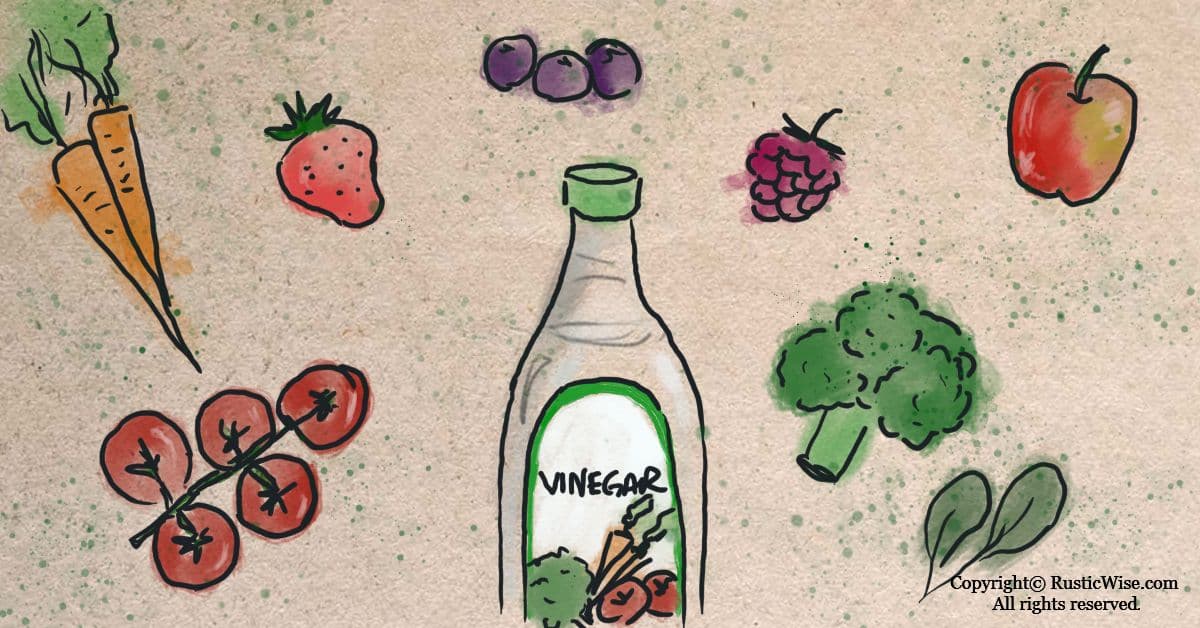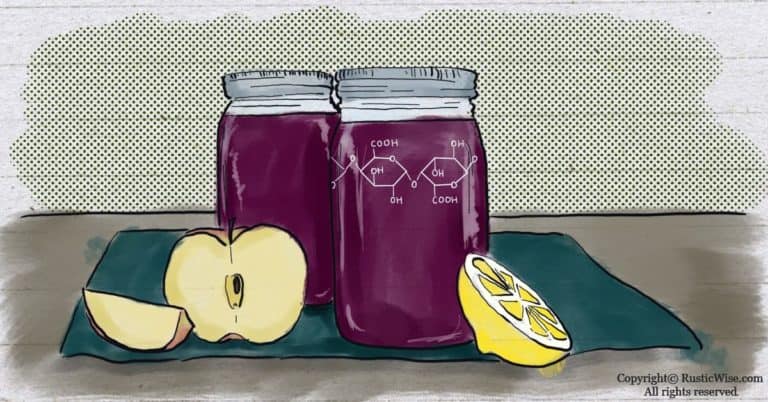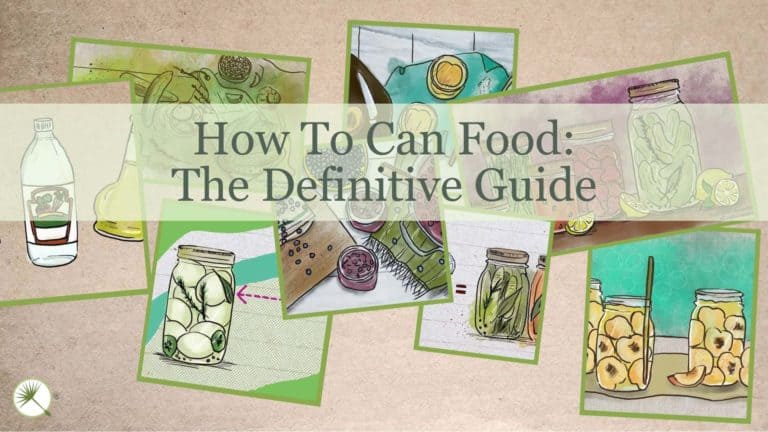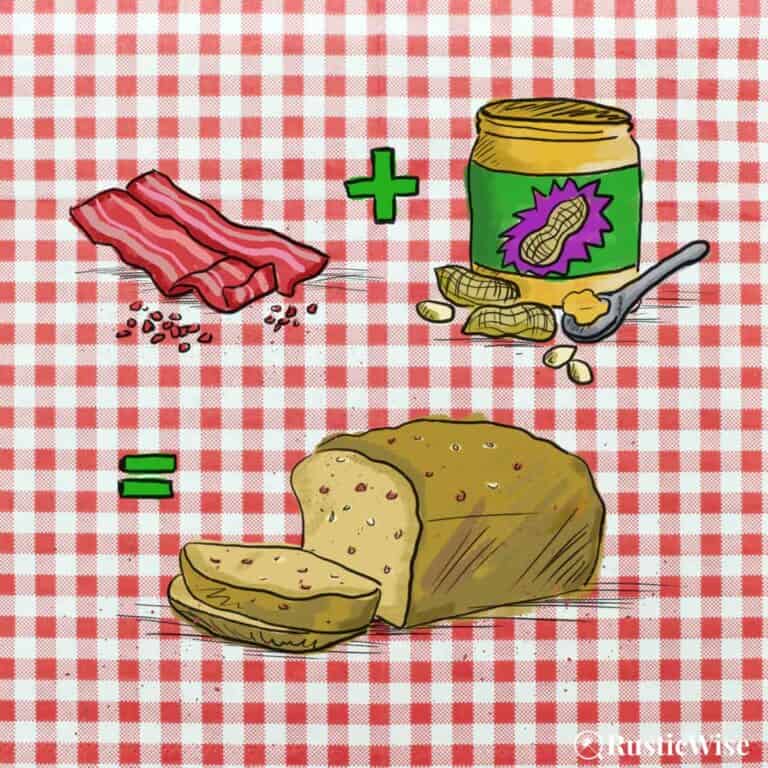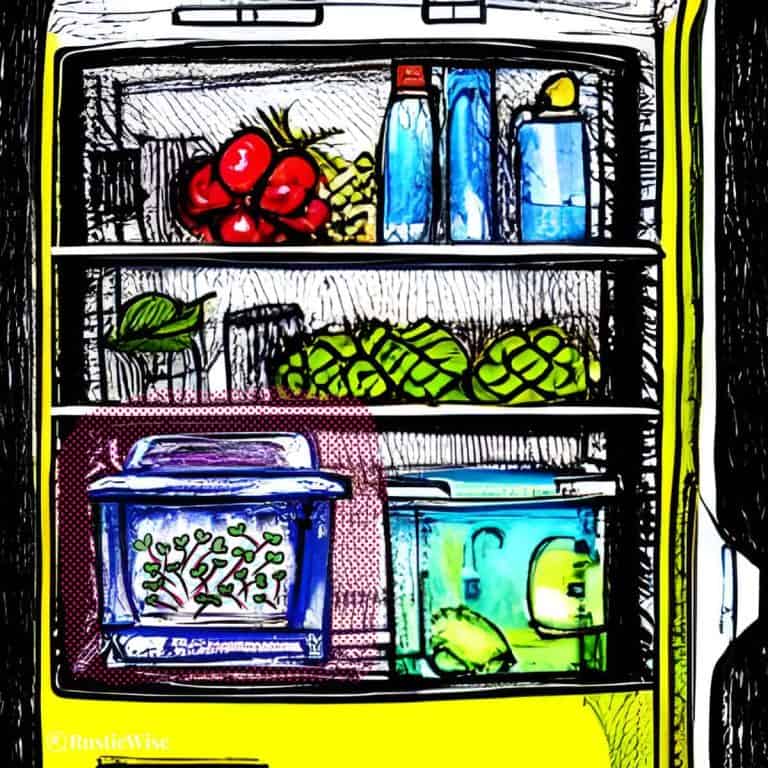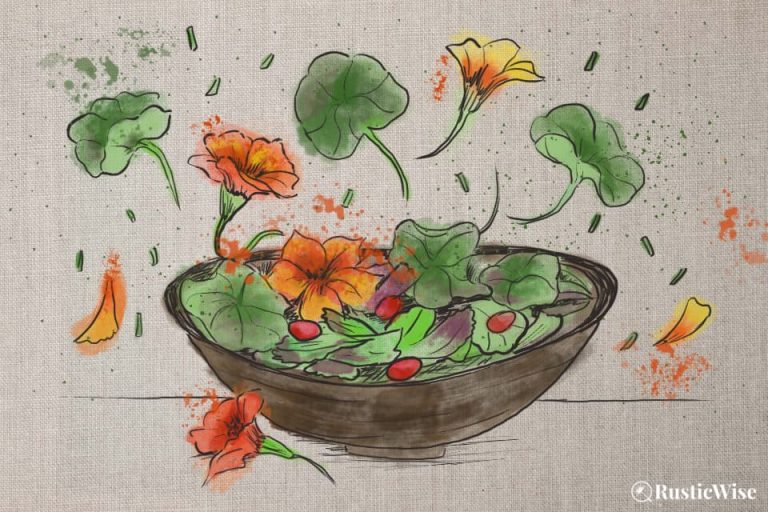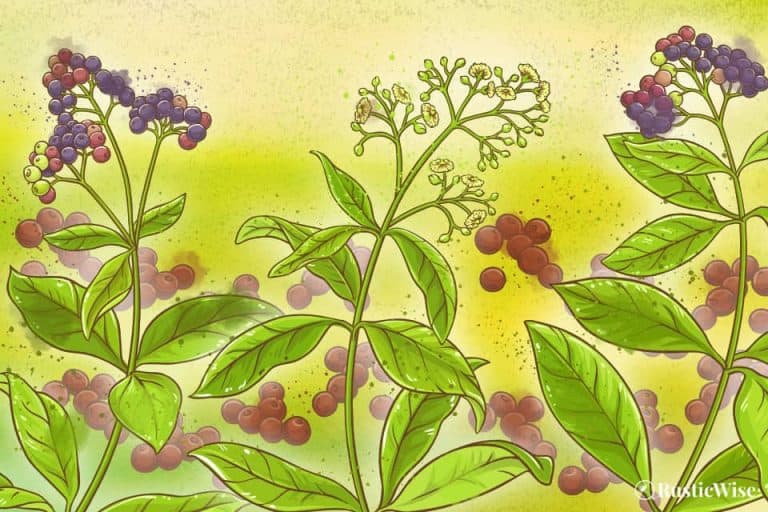How To Wash Fruits And Vegetables With Vinegar (and Do You Really Need to?)
When you think about the level of germs that may be present on fresh fruits and vegetables, buying produce from the grocery store can bring about a certain level of anxiety in many people (especially during a pandemic). You’re probably wondering how to wash fruits and vegetables with vinegar, and whether this is the most effective way to remove chemicals and harmful bacteria. The short answer is: you don’t need to use vinegar for an effective rinse, but it is effective in removing bacteria and can be helpful with certain types of produce, like leafy vegetables or berries.
It’s important to note that no method of cleaning produce is 100 percent effective in removing all bacteria and pesticides. Although with a few tips and best practices, some methods can come pretty close to 100 percent.
And while certain videos advising you to use dish soap to wash produce have become viral, food scientists say this is a definite no-no. This is because produce absorbs dish soap. Accidentally ingesting soap residue could cause vomiting, abdominal pain, and diarrhea.
We’ll look at how to effectively clean produce and how you can use vinegar if you choose to do so as a spray solution, or a vinegar soak.
Do I really need to wash fruits and vegetables before eating?
Yes, absolutely. According to the FDA (Food and Drug Administration), approximately 48 million in the U.S. become sick from foodborne illnesses every year. While some of this is attributed to animal products, fresh produce is also the cause (you might recall the Romaine lettuce recalls).
There are many ways that food gets contaminated during the various stages of food production from growing, packaging, to shipping. (Also, there’s the matter of other customers picking up and handling your tomatoes that should make you want to wash your produce!)
The FDA advises everyone to thoroughly wash all fresh fruits and vegetables under clean, cold water while rubbing. This includes fruits that you intend to peel such as oranges. It’s important to wash fruits and veggies before peeling or slicing as bacteria can be transferred from peel to edible fruit.
What about organic produce?
Yes, you should wash all fresh produce, even if it’s organic. Did you know that even organic produce may contain some chemicals? It’s a common misconception that organic produce is free of all chemicals.
The reality is that some organic producers may use certain approved natural-based pesticides. Organic produce is still a good way to go if you’re able to afford it. Organic foods still contain drastically fewer, and less harmful chemicals and pesticides than regular produce.
Do I really need to use vinegar to wash fruits and vegetables?
No, not really. Plain water is shown to be 98 percent effective in removing bacteria from fresh produce so you don’t need anything else to effectively wash fruits and vegetables.
According to an interview from BestFoodFacts.org with horticulture professors, Dr. Floyd Woods and Dr. Joe Kemble, vinegar is effective in some instances:
“Vinegar or acetic acid is safe to use as a home remedy to clean, sanitize or surface sterilize a variety of fresh fruits and vegetables. However, the extent and effectiveness of sanitation by using vinegar will depend on the nature of the suspected disease-causing agents. In other words, fungi and bacteria can be effectively removed from these fresh products by using vinegar, but the effectiveness of the vinegar depends on which bacterium and/or fungus is on (or suspected to be on) the fruit or vegetable, the concentration of the vinegar, the temperature of the water and the amount of time the produce is exposed to the vinegar.”
Dr. Floyd Woods and Dr. Joe Kemble
Vinegar is still a safe, natural ingredient that can be used to sanitize and clean produce. Other natural ingredients used to clean produce are baking soda and salt. Just make sure to rinse thoroughly once to remove the smell and taste of these natural ingredients.
Tip: Using vinegar and baking soda may affect the taste of fresh fruits and vegetables. Rinse thoroughly.
Are store-bought vegetable washes more effective?
Sadly, no. A study from the Department of Analytical Chemistry at the Connecticut Agricultural Experiment Station (CAES) looks at the level of pesticide residue present on produce after washing. This study compared the effectiveness of four commercial produce washes, along with a solution of one-percent Palmolive® solution (dish soap), compared to rinsing with plain water.
The results showed that the four fruit and vegetable washes were no more effective in removing pesticide residue than dish soap, or plain water.
The takeaway? Scientists recommend you wash produce for at least 30 seconds using tap water while scrubbing. The scrubbing greatly helps to remove surface chemicals and bacteria.
Save your money on the fruit and veggie wash and spend it on buying healthy food instead.
How to wash fruits and vegetables with vinegar
According to food experts, it’s not necessary to wash with vinegar, although it does provide peace of mind. (And we could all use some peace of mind amidst uncertain times).
If you would like to make a vinegar rinse, use three parts water to one part vinegar.
To up the acidity level and add a more pleasant citrusy scent, add a spritz of lemon juice to your vinegar solution.
The easiest way is to fill a clean spray bottle with your vinegar and lemon solution. Spritz several times to cover the surface of the food. Let it sit for at least 30 seconds. Then rub and rinse well with water to remove the vinegar.
This vinegar solution works well with smooth-skinned fruits and veggies such as apples.
How to wash leafy greens with a vinegar soak
The University of Maine offers guidelines on how to best wash leafy vegetables with vinegar:
- Separate leaves.
- Prepare a solution of ½ cup distilled white vinegar to two cups water. Place greens in a bowl along with the vinegar solution.
- Let soak for five minutes.
- Rinse thoroughly with clean water.
- Dry well with a salad spinner or clean towels.
Remember that vinegar may slightly alter the taste of produce.
How to wash berries with a vinegar soak
Strawberries, blueberries (pretty much all types of berries) can be washed safely with vinegar.
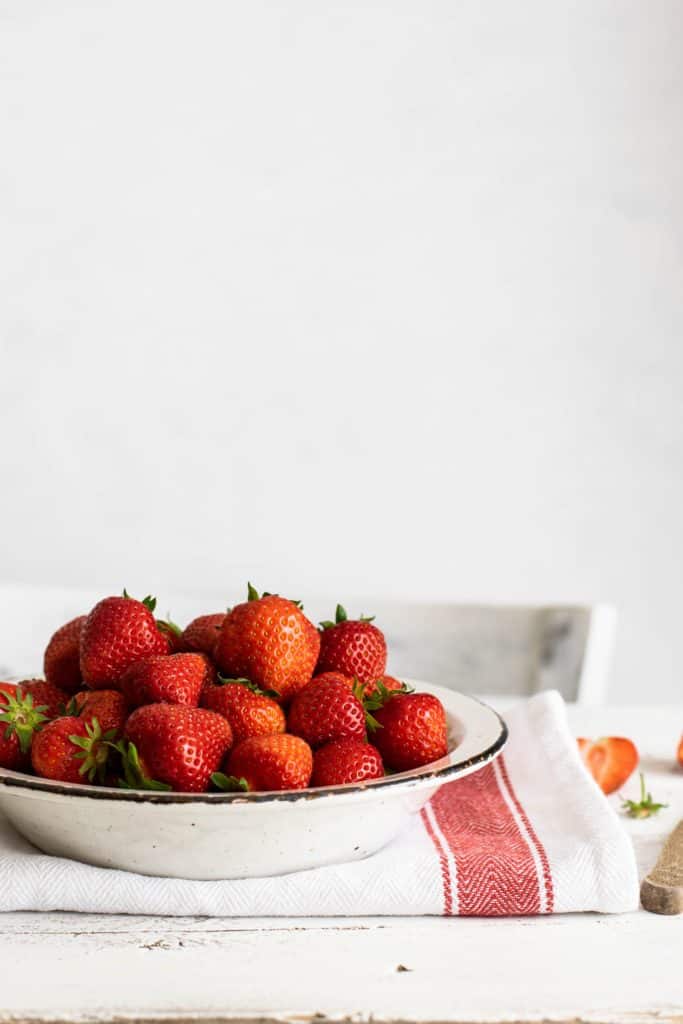
- Prepare a solution of ¼ cup vinegar and 1 ½ cup of water.
- Pour vinegar solution over berries in a clean bowl and let sit for 5 minutes.
- Place in a colander and rinse thoroughly with clean water.
- Allow to dry on a clean paper towel.
- Once berries are completely dry, line a clean storage container with paper towels, place a cover over it, and place in the fridge.
Does washing with vinegar make fruits and vegetables last longer?
While I haven’t found any scientific evidence to prove that vinegar prolongs the shelf life of fresh produce, many people claim that vinegar is effective in making berries last longer. If you find this to be the case, feel free to keep using vinegar—it doesn’t hurt.
Best practices for washing fruits and vegetables
- Wash your hands thoroughly with soap and water before handling your produce. We all know by now to sing the alphabet song while hand-washing.
- Ensure countertops, sinks, and other work areas are clean.
- Use plain tap water to wash produce for at least 30 seconds. However, if you have distilled water, this is even better as it contains fewer contaminants.
- Use a produce scrubber on firm-skinned fruits and vegetables while washing. For all other types of produce, use your clean hands to actively rub the outer surface while washing to remove bacteria and chemicals.
- Use a clean bowl or basin rather than the kitchen sink to soak your fruits and vegetables. Your kitchen sink (no matter how much it’s scrubbed) is a breeding ground for bacteria.
- Soak “hard-to-wash” veggies like cauliflower and broccoli in cold, clean water in a clean bowl for two minutes to remove any dirt and debris before thoroughly rinsing with water afterwards.
- Select unbruised fruits and vegetables from the grocery store if possible. Before eating, remove any damaged pieces.
- For leafy greens (such as cabbages), remove the outer leaves. To thoroughly clean, separate leaves before washing.
- Remove the blossom end and stem of fruits and vegetables prior to eating. These ends often contain trapped bacteria and dirt.
- Store produce from the store or garden within two hours, and keep refrigerated at 40 degrees Fahrenheit (4.4 degrees Celsius).
The takeaway
To effectively clean fresh fruits and vegetables, you just need to rinse well with plain tap water for at least 30 seconds and scrub well. Make sure you wash your hands well beforehand, ensure the workspace on countertops is clean and follow the best practices we’ve listed above. No, you don’t need to buy fancy fruit and vegetable washes, and sometimes you can use vinegar to soak fruits and vegetables.

Author: Theresa Tesolin
Theresa is co-founder of RusticWise. She helps people unleash their inner DIY spirit by encouraging them to get dirty and make or grow something from scratch.

